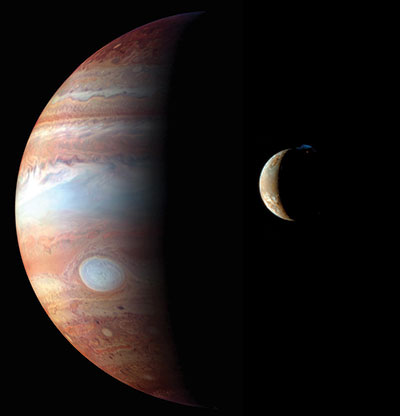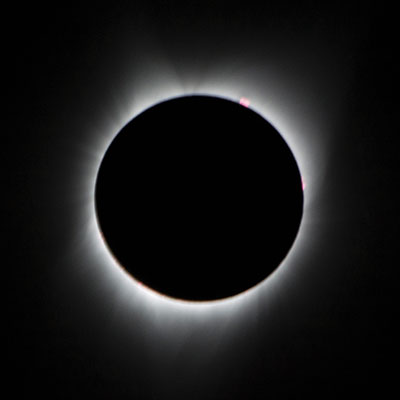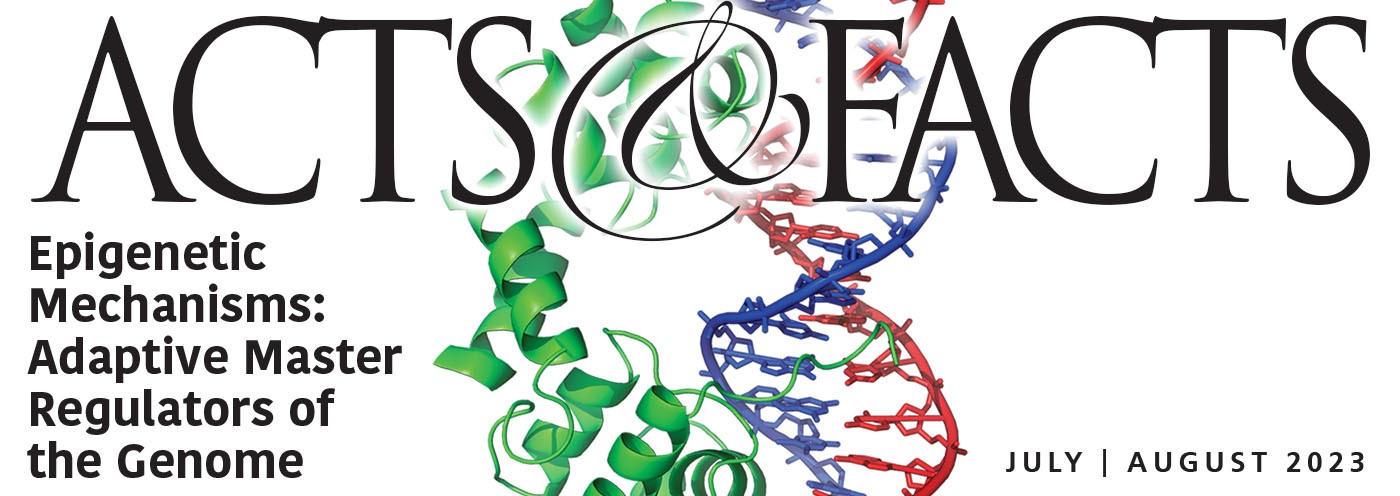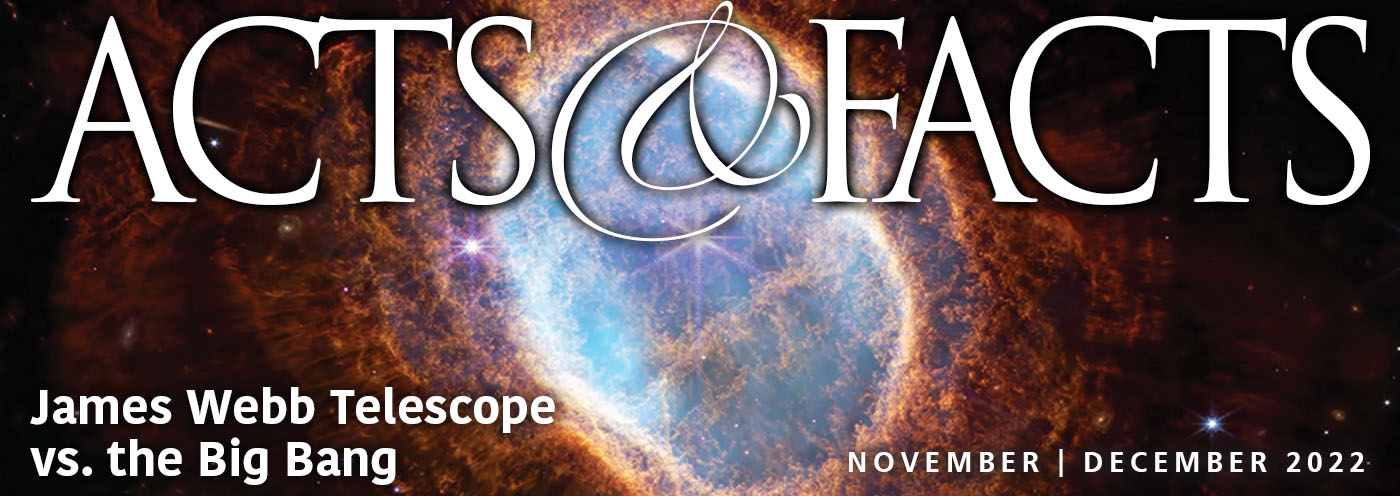 Our moon plays a critical role in producing the environment required for life to thrive on Earth. If the moon suddenly disappeared, then the consequences for many forms of life would be devastating. The moon is the second-brightest regularly visible celestial object in Earth’s sky. As Genesis 1:16 says, “Then God made two great lights: the greater light to rule the day, and the lesser light to rule the night.”
Our moon plays a critical role in producing the environment required for life to thrive on Earth. If the moon suddenly disappeared, then the consequences for many forms of life would be devastating. The moon is the second-brightest regularly visible celestial object in Earth’s sky. As Genesis 1:16 says, “Then God made two great lights: the greater light to rule the day, and the lesser light to rule the night.”
Without the moon, all clear nights in areas without artificial lighting would be too dark for many nocturnal animals to search for food. Consequently, if the moon disappeared, some species would likely become extinct.1 Even the biological clocks used by many life forms are closely tied to the moon.
Of the eight planets in our solar system, Earth has the largest moon relative to the size of the planet it orbits. Three of Jupiter’s moons—Ganymede, Io, and Callisto—and one of Saturn’s moons, Titan, are all larger than our moon but are proportionally far smaller compared to the planet each orbits.
Our moon is only about one quarter of a million miles from Earth, closer than most large planetary moons.2 The moon lacks an atmosphere, thus no wind exists. This still environment allows any change on the moon’s surface, such as a meteorite crater or a footprint, to serve as a time capsule. Since the moon lacks an atmosphere, the sky viewed from its dark side would always be dark, allowing the stars to be constantly visible.3 On the sunlit side, one would not see stars because the solar glare would overwhelm the sky.

The Moon Is Earth’s Night-Light
From Earth, the moon appears to be a bright gray-white color, and its brightness varies dramatically as its phase changes. On average, the moon reflects only about 12% of the sun’s light, a slightly higher level than that reflected from worn asphalt.4 If the reflection were 100%, Earth’s night would at times be almost as bright as its day. As a result, plants that require a night cycle would not survive because certain critical plant biochemistry occurs only at night.5 The moon requires about a month to circle Earth. Because the moon is slowly rotating as it orbits, the same face is always visible from Earth.
The Moon and the Seasons
Earth’s axis angle is critical to temperature. It’s hottest near the equator, where the sun’s rays strike at close to a 90º angle. The more it deviates from this angle, the lower the temperature. This is why Earth’s poles are significantly colder. Many researchers believe our moon’s gravitational influence helps to ensure the stability of Earth’s spin axis’ tilt angle. Even over several million years of assumed prehistory, Earth’s axis’ tilt is estimated to only have varied by ±1.5 to 2.5°.6 As a result, our climate and seasonal variations have generally remained modest throughout our relatively short history.
Without the moon, many scientists believe Earth’s axis would likely wobble much more than it does now. Too much deviation and the Earth could be “locked into a permanent deep freeze or else heated to dangerous levels.”7 The stability of Earth’s climate “depends on the presence of the moon which stabilizes its obliquity, and hence the insolation variations on its surface.”8
The moon’s effect on Earth’s stability is due in part to two critical factors: its size and orbit. Two basic types of orbit exist: an equatorial orbit, which travels along the line of the planet’s equator, and an ecliptic plane orbit, which lies in the flat plane defined by the planet’s orbit of the sun. The moon’s orbit is unique—most of the other named moons orbit their planets in an equatorial orbit. In contrast, our moon orbits in an ecliptic orbit. In other words, the moon’s orbit is very close to the plane of the ecliptic, not the earth’s equatorial plane.
The planets in our solar system have elliptical-shaped orbits, meaning the orbit’s shape is an ellipse, or “squashed” circle. However, Earth has an orbit shape that is closer to a circle than that of most planets. Earth’s remarkable stability is due to the combination of its large moon and its nearly circular orbit. One of these two traits alone could not produce the stability necessary for life; both are required.

The Moon’s Stabilizing Effect
Earth’s spin axis’ stability is due to the existing Earth-moon system, which causes the axis angle to be nearly constant due to the moon’s gravitational effects. Without “the Moon, the tilt angle would wander in response to the gravitational pulls of the sun and Jupiter. The monthly motion of our large Moon damps any tendencies for the tilt axis to change.”9
A tilt significantly larger than 23.5º would cause greater climate fluctuations because some areas of Earth would be more exposed to light, others less exposed. The existing tilt of Earth’s axis is “just right” for life to thrive.10 An examination of the climates of other planets in our solar system provides proof of the importance of a planet’s tilt.11
Calculations performed in the early 1990s suggested that without our moon, the tilt of Earth’s axis could vary by as much as 90º. Obviously, such dramatic changes in Earth’s tilt would result in extreme climate changes that would be devastating to life. These calculations indicate that the moon is very important to life on Earth, which in turn suggests that the moon was designed.
More recent research, performed with greater computing power, has refined the earlier estimates. Yet, even these newer calculations indicate that without the moon, the earth’s axis tilt could vary by 10º—from 13º to 33º.12
Some secular scientists are using these newer results to argue that the moon’s existence isn’t as important for life on Earth as once believed. They claim that the climate changes resulting from a 10º tilt change would be less of a problem than previously supposed. They would like to avoid any suggestion that Earth and our moon have been designed.

Secular scientists are faced with a contradiction, however, when they claim a 10º change in Earth’s tilt would not cause significant problems for life. Most secular scientists hold to the Milankovitch (also called astronomical) ice age theory, which claims that the timing of ice ages is somehow controlled by Earth’s orbital motions, including the small variations in Earth’s axial tilt. If a small variation of 2.5º can bring about ice ages, a 10º variation would cause much greater climate extremes. Of course, many problems exist with this astronomical ice age theory. Mike Oard and other climatologists believe the Genesis Flood provides a superior explanation for the Ice Age.13
For example, if Earth’s tilt is greater, more of the Northern Hemisphere will be in continuous daylight during the summer months, causing some higher-north latitudes to exceed the temperature of Death Valley, prohibiting many life forms from subsisting there. The other six months would exist in full darkness and therefore be unbearably dark and cold for most all life forms, like the arctic North Pole areas are now.
Less tilt than 23º would produce milder climates but prevent the wide distribution of rain that now exists on Earth. This is because the 23.5º tilt produces wind pattern changes that move around enormous amounts of water vapor in the earth’s atmosphere. This water falls as both rain and snow required for plant and animal life.
The presence of our moon not only leads to a relatively stable climate but also creates a phase rhythm that has guided humans for thousands of years. Since ancient times, the moon’s prominence in the sky and regular phase cycle have made it a major influence on the development of calendars, agriculture, language, and art.14
The Tides
The moon causes tides and wind to generate worldwide ocean currents that help to widely redistribute Earth’s water nutrients and toxins. Without this effect, ocean water would be stagnant and seriously interfere with, and eventually kill, most life in the ocean.15 The moon causes about half of the tide effect. The sun and nearby planets cause the rest.16
The moon’s pull has an enormous impact on Earth. It’s not only exceptionally large for a planet of Earth’s size, but astronomically it orbits very close to us. This creates large gravitational forces between the earth and moon, causing both the large ocean tides and the much smaller continental land tides. When the moon travels directly overhead Earth, the atmosphere bulges in distances measured in miles, the oceans bulge in distances measured in feet, and the Earth’s land mass in distances measured in fractions of an inch.17
Although both the sun and wind drive the ocean’s oscillations, the moon’s gravitational tug is responsible for the major share of the tidal flux. The gravitational attraction of the sun on Earth’s oceans is almost half that of the moon’s, and their gravitational interaction causes both the spring and neap tides.18
The Temperature Modulation Effect of Tides
The ocean’s tidal flow also helps to transport enormous amounts of heat from the temperate equator areas to the frigid poles, significantly mitigating extreme climate fluctuations. Without the lunar tides, climate oscillations would be far more extreme. If the moon suddenly vanished, the lack of attraction of the moon on Earth’s oceans would cause the bulge of water in the oceans to collapse, resulting in a gigantic global wave, flooding parts of the mainland. Lacking these lunar tides, the water waves driven by the sun and surface winds would move the ocean water miles inland onto the vast, flat landscape.19
The Moon’s Important Protection Role
The moon, like the planets, especially Jupiter and Saturn, helps to protect Earth from damage caused by incoming asteroids, meteorites, and comets. Many space rocks that otherwise would strike Earth are pulled toward the moon by its gravity, missing us.20 Although the moon’s surface area is only 7% of Earth’s surface area, its effect is significant.21

Supporting this role is the fact that the moon’s far side, the half not facing Earth, always faces toward deep space “and as a result is one of the most heavily cratered surfaces in the solar system.”22 The moon’s far side has over a dozen craters with diameters 150 miles or more and very few flat lands, called seas.23 Although the moon is only a spherical rock 2,000 miles in diameter and 250,000 miles away, it has enabled Earth to be a long-term habitat for life. The moon is a fascinating factor in the Rare Earth concept because the chances that an Earth-like planet should have such a large moon are quite small. Of the many moons in the solar system, nearly all orbit the giant planets of the outer solar system. The warm, Earth-like planets that are close to the sun and that fall within the habitable zone are nearly devoid of moons.24
The moon, like the planets, especially Jupiter and Saturn, helps to protect Earth from damage caused by incoming asteroids, meteorites, and comets. ![]()
The Perfect Eclipse for Research
The moon’s current orbital distance is about 30 times larger than the earth’s diameter, causing it to have an apparent size in our sky almost the same as the sun. This allows the moon to nearly cover the sun’s surface during a total solar eclipse—the moon is just the right size to totally block the sun’s bright photosphere. This allows the sun’s corona to be studied in detail. No other planet-moon system has this advantage, and it’s convenient that the planet with this advantage has intelligent life on it that can use this fact to study the sun’s corona.

If the moon were much larger, an eclipse would obscure the sun’s colorful chromosphere. If less round, the chromosphere would be either partly blocked or the bright photosphere would be incompletely blocked, preventing the careful study of the chromosphere.25 But it’s the perfect shape to produce a total eclipse, the only place in the solar system where this can occur.
The moon was designed to help us thrive. ![]()
Summary
Earth’s moon is the perfect shape, size, density, and distance from us to produce the stable environment that is important for life to thrive. Its many protective effects include causing the tides, providing the ideal level of light to light up the night, and, many scientists believe, stabilizing Earth’s tilt. The Earth-moon system relationship would be very different if only small astronomical changes occurred. The moon was designed to help us thrive. Tonight, take the opportunity to look up into the night sky and view this special piece of God’s handiwork.
References
- Comins, N. 1991. The Earth Without the Moon. Astronomy. 19 (2): 48-53.
- DeYoung, D. and J. C. Whitcomb. 2003. Our Created Moon: Earth’s Fascinating Neighbor. Green Forest, AR: Master Books, 16.
- Comins, N. F. 2003. Heavenly Errors: Misconceptions about the Real Nature of the Universe. New York: Columbia University Press, 35-36.
- Seeds, M. and D. Backman. 2014. ASTRO2. Boston, MA: Books/Cole, 111.
- Black, C. and B. Osmond. 2003. Crassulacean acid metabolism photosynthesis: ‘working the night shift.’ Photosynthesis Research. 76 (1-3): 329; Dodd, A. N. et al. 2015. Interactions between circadian clocks and photosynthesis for the temporal and spatial coordination of metabolism. Frontiers of Plant Science. 6: 245.
- Ward, P. and D. Brownlee. 2000. Rare Earth: Why Complex Life Is Uncommon in the Universe. New York: Copernicus, 223; Laskar, J., F. Joutel, and P. Robutel. 1993. Stabilization of the Earth’s obliquity by the Moon. Nature. 361: 615-617.
- DeYoung, D. 2008. Tides and the Creation Worldview. Creation Research Society Quarterly. 45 (2): 100-108.
- Laskar, J. and P. Robutel. 1993. The chaotic obliquity of the planets. Nature. 361: 608-612. See also Jakobsen, H. What would we do without the moon? ScienceNordic. Posted on sciencenordic.com January 12, 2012, accessed August 10, 2018.
- Ward and Brownlee, Rare Earth, 223-224.
- Ibid, 224-225.
- Laskar and Robutel, The chaotic obliquity of the planets.
- Cooper, K. Earth’s moon may not be critical to life. Astrobiology Magazine. Posted on astrobio.net January 26, 2015, accessed August 12, 2018. See also Jack, J. J., J. W. Barnes, and J. E. Chambers. 2011. Obliquity variations of a moonless Earth. Icarus. 217 (1): 77-87.
- Oard, M. J. 1990. An Ice Age Caused by the Genesis Flood. El Cajon, CA: Institute for Creation Research; Oard, M. 1997. The New Weather Book. Green Forest, AR: Master Books, 6-7.
- Slote, A. 1967. The Moon in Fact and Fancy. New York: World Publishing Company.
- DeYoung and Whitcomb, Our Created Moon, 80.
- Comins, The Earth Without the Moon, 50-51.
- Slote, The Moon in Fact and Fancy, 28.
- Le Provost, C., A. F. Bennett, and D. E. Cartwright. 1995. Ocean Tides for and from TOPEX/POSEIDON. Science. 267 (5198): 639-642.
- Comins, N. 1993. What if the Moon Didn’t Exist: Voyages to Earths That Might Have Been. New York: HarperCollins.
- DeYoung and Whitcomb, Our Created Moon, 82-83.
- Gonzalez, G. and J. W. Richards. 2004. The Privileged Planet: How Our Place in the Cosmos Is Designed for Discovery. Washington, DC: Regnery Publishing, 115.
- Comins, The Earth Without the Moon, 52.
- Simon, S. 2003. The Moon. New York: Simon & Schuster, 14.
- Ward and Brownlee, Rare Earth, 222.
- Gonzalez and Richards, The Privileged Planet, 8.
* Dr. Bergman is Research Associate at the Institute for Creation Research and was an adjunct associate professor at the University of Toledo Medical School in Ohio.







